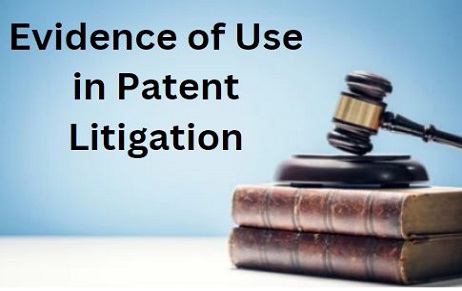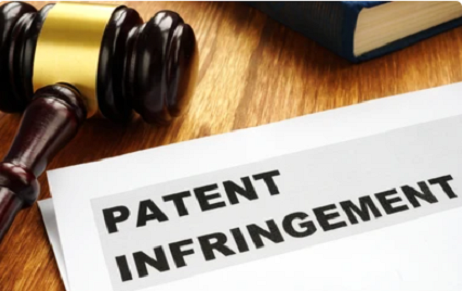Introduction A patent application is a formal form of request pending approval from the authorized…
Navigating the Legal Landscape of Patent: Unveiling Evidence of Use in Patent Litigation
All over the world today businesses strive for growth by maintaining a competitive edge in the market through modern technology which requires investment in innovation but such investment will only be encouraged if they are protected from other players in the market. Patents have been for long a time used as a tool to protect the rights of the inventor to use and reap the benefits of his innovation. The word patent originates from the Latin word patere, which means “to lay open”. A patent is a type of intellectual property right which grants the owner an exclusive right granted for an invention which provides a new technical solution to a problem. Patent is only given when the inventor/applicant fulfils the legal requirement of registration of patents. The patent law provides two bargains it empowers the creation of new inventions for the long run by preventing the diffusion of new ideas in the short run. The second bargain is that it impose a cost on the society by granting exclusive rights to the to the patent holders through which they create their monopoly. A patent is granted for a period of 20 years from the date of filling application. A patent is a territorial right which means a patent granted cannot be enforced in other country unless the invention is patented there. The Patent Cooperation Treaty (PCT) has the procedure which allows individuals to file an international patent application where a patent can be filed through a single patent application in a large number of countries.
There are three basic test for an invention to be patentable –
- Novel – The invention must be novel which means that the invention must not be in existence.
- Non Obvious – The invention must not be obvious to a person of ordinary skill, it shall lead to significant improvement in the field in which it is used.
- Utility- The invention must have some industrial utility or application.
The act VI of 1856 was the first time when a step toward patent law was taken. This legislation was based on the British Patent Law of 1852 and its objective was to encourage inventions. It granted patent exclusive privileges to inventors for 14 years.
This act was then replaced by act XV of 1859 which extended the priority period to 12 months. In 1872 the act of 1859 was merged and renamed as “The Patterns and Designs Protection Act” and included protections related to design. Later in the year 1911 all the previous acts were replaced by the Indian Patents and Designs Act, 1911, with this act the patent administration was brought under the management of controller of patents. Later the Justice N. Rajagopala Ayyangar Committee report led to the introduction of the Patents Bill, 1965 which in the year 1967 was referred to the parliamentary committee and the Patents act, 1970 was passed. Then further amendments were made to this act which allowed the controller of patents to increase the term from 14 years to 16 years. And Subsequently the Patents (Amendment) Act, 1999 that was brought into force retrospectively from 1st January, 1995. This act allowed the applications for products patent in areas of pharmaceuticals and agro chemicals.
Patent litigation
In India we require a strong legal framework for patents to prevent the unethical and unauthorised use of patents. Patent litigation referrers to the legal process wherein a person who owns for an invention sues the other party for manufacturing and selling the invention without the permission of the person. The reliefs available to the person in such cases are that he can file patent law suit for infringement and can demand injunction and damages from the third party. This litigation is dealt by a patent litigation attorney who is a specialised individual and is entitled to deal with patent litigation. He basically has same role as of an advocate and represents patent cases in the court.
In a patent litigation the first step in the pre-trial stage is the initial disclosure by the parties which provide information about the parties and their position in the case. It shall disclose the documents which are relevant in the case.
Pre-trial hearing
A pre-trial hearing or marksmen hearing is also known as claim construction hearing because in such hearing the judge examines the evidence from all parties and decide the proper meaning of disputes claim language . A patent litigation involves formulation of patent claim, which is one of the most essential part of a patent litigation. The court shall establish the scope of asserted patent claim. The court resolves the dispute by deciding the appropriate meaning of keywords used in the claim. The court interprets the language in the patent claim according to its ordinary meaning in with respect to someone of ordinary skill in the field to which the invention pertains, unless the patentee specially defined the language. This is a critical stage in the patent litigation because in the pre-trial hearing the parties try to draw out an interpretation of the claim language that strengthens their position. Now because a patent claims include range of languages it is important for the plaintiff to interpret the language in claims in the broadest way possible so as to include the defendants services to prove infringement, whereas the defendant need to interpret the claim in a narrow way to exclude his services from the claim alleged by the plaintiff. The materials which are included in the patent application are refereed as intrinsic evidence which includes the claims, executive summary, written or verbal correspondence between the patent applicant. Extrinsic evidence are those which are not included in the patent application but originate from outside sources.
[Image Sources: Shutterstock]
 Patent claim chart
Patent claim chart
Patent claim charts are used to determine if any infringement has occurred. A claim chart basically displays all the information which is there in patent claim. A claim chart is a tabular/graphical representation which helps to simplify the patent claim into various elements which are part of the claim. This helps the patentee to easily establish that the third party’s product is infringing the claim. Usually the left column of the table contains independent claim that are further divided into its constituent element. The right column defines the features of the products. It helps to present the mapping between each claim limitation and the evidences of use in an organised way. Claim charts helps to breakdown complex arguments with technical jargons into simple readable arguments which helps the court to decide the case. The main purpose of a patent claim chart is to show the complete breakdown of each constituent into its elements or limitations. A well prepared claim chart creates a high impact in the patent litigation to decide the case. Claim charts helps in validating or refuting the novelty of a patent claim in relation to the prior art. Claim chart is a tool which used in patent litigation through which the patentee tries to establish infringement of a claim against the third party. Claim charts are used in variety of cases like patent infringement analysis or litigation, Patent licensing and marketing etc. Three important things that a claim chart needs to include are :
1. The specific claims which have been infringed
2. Products and services of the defendant which are made through the patented technology
3. To show precisely where the specified elements of the claim are used in the products
Evidence of use
The Evidence of use claim charts are used determine the extent to which the third party’s technology falls within the patent claim of the petitioner. It helps to detect potential infringement of patents. During the evidence of use analysis the product already available in the market can be used for comparing the claim elements. Any product which is under development should not be used for evidence of use claim chart and one shall not file a patent lawsuit based on the product which is underdevelopment the reason is that the third party can change the product by either including or removing the claim element in the final product. There are two types of evidence of use charts.
1.Patent to product approach
In this approach the product or process is compared with the elements in the claim to determine whether there is an infringement of patent claim. One of the main benefits of this approach is that it helps the applicant to access that how many patents in their portfolio cover their products. While using this approach if the constituent elements of the claim are matching with the features of the products then it would amount to infringement.
2. Patent to standard approach
It involves mapping patent claims to the relevant text of a standard. In this approach the claim is broken into its various elements. These elements are then. Compared with the proposed technology to determine if any patent already granted covers the proposed technology.
Author: Manit Sharma, in case of any queries please contact/write back to us via email to [email protected] or at IIPRD.

 Patent claim chart
Patent claim chart